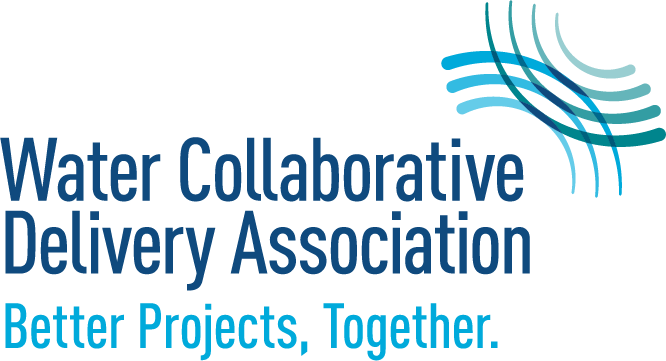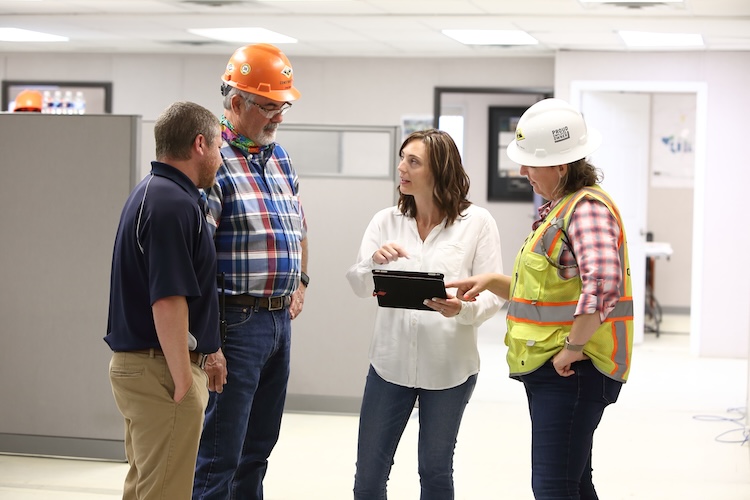You’ve heard the buzz; it seems like every water/wastewater utility or owner is using progressive design-build (PDB) or construction management at-risk (CMAR) for its upcoming infrastructure projects. Now it’s your turn and the thought of implementing a new procurement method makes your palms sweaty, your head ache, and your procurement department fret. Don’t panic—with the right resources and support, you and your project will be successful, especially with a little help from those who have been there and done that!
The use of collaborative delivery procurement for infrastructure projects is growing rapidly. According to a June 2024 Engineering News-Record article, revenue generated by the use of collaborative delivery has increased significantly year over year. Based on information from the top 100 US construction firms, revenue has increased 26% from design-build and 8.5% from CMAR. In total, 75% of these firms report rising revenue from collaborative delivery. Closer to home, at PC Construction the percentage of our water/wastewater revenue derived from collaborative delivery procurement has steadily increased each year, and in 2024 progressive design-build and CMAR projects will account for more than 80% of our revenue.
I recently interviewed four engineering managers representing medium to large Eastern US water organizations to gain a better perspective on what is driving the industry’s use of collaborative delivery. The answers largely matched a trend that is indicative of the times—a focus on quality and safety, better understanding of project cost early, increasingly complex projects with new technologies, and limited bidding participation due to labor shortages and increased market activity. Many cited horror stories specific to these very issues. Thus, there has been this natural progression to a more collaborative, transparent process designed to bring all team members together to achieve a common goal.
As you consider your first collaborative delivery project, I’d like to offer some hard lessons learned from my partners in the industry:
- There isn’t a “one-size-fits-all” approach to project delivery. Each method is a tool that is designed to support a specific type of project. Be selective and intentional when deciding which method to use for your unique project.
- If possible, start with a smaller, less consequential project. Learn the process and gain the trust of your teams.
- Educate at all levels of the organization to ensure all levels understand the process and support the approach.
- Engage the collaborative delivery market early to get good participation. Engage subcontractors and vendors, experienced with collaborative delivery, in the design and preconstruction process to encourage future bidding.
- Be open-minded and recognize that all projects, regardless of delivery method, will have ups and downs. Harnessing the power of collaborative delivery will help the entire team recognize and accept difficult situations and work together to develop solutions that drive results.
- Engage an experienced partner who can offer guidance during the process. An owner advisor can be key to those new to collaborative delivery, and that role can be filled by an industry expert or an experienced engineering firm.
- Working collaboratively requires everyone to check their egos at the door. No one person is always right; it takes a team and everyone’s contributions to achieve the end goal.
- Be prepared to spend the time to actively participate in the process and engage your maintenance and operations staff early in the process. That will be key to your success and project acceptance.
There are also a variety of tools and resources that can help make your first collaborative delivery project a reality:
Institutional Education: There are so many options to learn from collaborative delivery professionals. WCDA provides handbooks, classes, and contacts to guide you through the process. They’ll also provide professionals to deliver tailored training to your entire team at your location. DBIA also offers training and certification both in person and virtually.
Practitioners: There is a wide range of resources available through the community of practitioners, many of whom you may already know. Contractors, engineers, and even some vendors can offer learning sessions suited to your needs. They may even speak directly to your project and offer suggestions and recommendations on why one delivery method is desirable over another.
Partners: Having an owner advisor or program manager on your staff, especially for larger projects, is often a good choice. This allows your staff to seek timely and relevant advice on critical needs such as RFQ/RFP documents, contract development, open-book estimates, and team selection.
Legal Resources: Due to market maturity, many legal documents you may need for your project have likely already been developed in the industry. WCDA offers a CMAR contract that has been developed with industry experts. RFQs/RFPs may also be available for adoption from nearby municipalities or through an owner advisor. Be careful not to create documents that are outside of the industry norm or produced from a variety of sources. These “Franken-documents” will often contradict the collaborative process as they become onerous or difficult to understand.
Most importantly, choosing the right group of in-house individuals to work through your first collaborative delivery project is critical. The change from lump-sum bidding to a collaborative environment is not for everyone. Having the right personalities will set the stage for success.
As you gear up for the transition to collaborative delivery, take advantage of the numerous resources to set your team up for success. Whether $4 million or $450 million, collaborative delivery can yield incredible project results!

